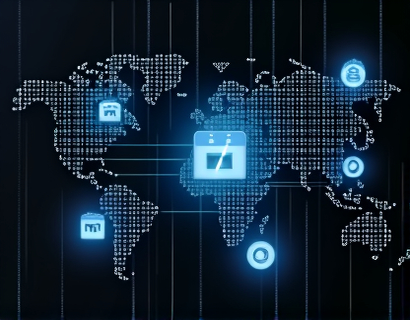Agricultural Software: Transforming Farming Efficiency with Tailored Tech Solutions
In recent years, the agricultural sector has witnessed a significant transformation driven by advanced software solutions. These technologies are not just enhancing operational efficiency but also revolutionizing the way farming businesses and professionals manage their operations. The integration of tailored tech solutions in agriculture is pivotal in addressing the challenges of modern farming, such as climate variability, market fluctuations, and resource constraints. This article delves into the various ways agricultural software is reshaping the industry, focusing on streamlined processes, improved data management, and informed decision-making.
Streamlined Processes
The first and foremost benefit of agricultural software is the streamlining of processes across the farm. From planting to harvesting, every step can be optimized through technology. For instance, precision agriculture tools use GPS and sensor data to ensure that seeds are planted at the optimal depth and spacing, reducing waste and increasing yield. Automated irrigation systems adjust water usage based on real-time soil moisture levels, ensuring that crops receive exactly what they need without overwatering. These technologies not only save time but also reduce the physical strain on farmers, allowing them to focus on other critical tasks.
Additionally, software solutions for farm management integrate various aspects of farm operations into a single platform. This integration eliminates the need for manual data entry and reduces the risk of errors. Tasks such as scheduling, inventory management, and equipment maintenance can be managed efficiently through a centralized system. For example, a farmer can schedule maintenance for tractors and other machinery, receive alerts when service is due, and track the history of repairs all within the same application. This level of organization ensures that nothing falls through the cracks, leading to smoother and more efficient operations.
Improved Data Management
Data is the backbone of modern agriculture, and effective data management is crucial for making informed decisions. Agricultural software provides robust tools for collecting, storing, and analyzing data. Sensors and IoT devices deployed across the farm continuously gather data on soil conditions, weather patterns, crop health, and more. This data is then stored in a secure cloud-based database, accessible from anywhere, at any time. Farmers and agricultural professionals can monitor their operations in real-time, making timely adjustments as needed.
Data analytics plays a vital role in transforming raw data into actionable insights. Advanced algorithms and machine learning models can predict crop yields, identify potential issues before they become critical, and optimize resource usage. For instance, by analyzing historical weather data and current conditions, the software can forecast the best times for planting and harvesting, maximizing the chances of a successful crop. Similarly, by monitoring soil nutrient levels and crop health, farmers can apply fertilizers and pesticides more precisely, reducing costs and environmental impact.
Informed Decision-Making
The ability to make informed decisions is perhaps the most significant advantage of agricultural software. With access to comprehensive and accurate data, farmers and agricultural professionals can make strategic decisions that enhance productivity and profitability. Decision support systems (DSS) integrated into agricultural software provide recommendations based on current data and predictive analytics. These recommendations can range from optimal planting densities to the best times for market entry based on price trends.
Risk management is another area where agricultural software excels. By analyzing various factors such as weather patterns, market prices, and crop diseases, the software can help farmers assess and mitigate risks. For example, if a particular disease is expected to affect a region, the software can suggest preventive measures or alternative crop varieties that are more resistant. This proactive approach not only protects the farm's output but also ensures financial stability.
Enhanced Collaboration and Communication
Agricultural software also fosters better collaboration and communication among different stakeholders in the farming ecosystem. From farmers to suppliers, processors, and retailers, everyone can benefit from a connected platform. Shared access to data ensures that all parties are on the same page, reducing misunderstandings and delays. For instance, suppliers can be notified automatically when inputs such as seeds or fertilizers need to be reordered, ensuring that the farm never runs out of essential supplies.
Moreover, remote monitoring and management capabilities allow farm managers to oversee operations from anywhere, coordinating with field workers in real-time. This is particularly useful in large-scale operations where physical presence on the farm is not always possible. Video conferencing and messaging features within the software facilitate seamless communication, ensuring that issues are addressed promptly and efficiently.
Sustainability and Environmental Impact
The environmental benefits of agricultural software cannot be overlooked. By optimizing resource usage and reducing waste, these technologies contribute to more sustainable farming practices. Precision agriculture, for example, ensures that water and fertilizers are used only where needed, minimizing runoff and pollution. This not only benefits the environment but also reduces costs for farmers, making their operations more economically viable in the long run.
Additionally, agricultural software can help farmers adopt and track sustainable practices. Certification programs and regulatory compliance can be managed through the software, ensuring that farms meet the required standards. By providing detailed records and reports, the software helps farmers demonstrate their commitment to sustainability, which can be a significant selling point in today's market.
Challenges and Considerations
While the benefits of agricultural software are clear, there are several challenges and considerations that need to be addressed. One of the primary concerns is the initial cost of implementing these technologies. For small-scale farmers, the investment in hardware, software, and training can be prohibitive. However, as the technology becomes more widespread and affordable, these barriers are gradually being overcome.
Another challenge is the need for technical expertise. Farmers and agricultural professionals must be trained to use these systems effectively. Many software providers offer training programs and support services to help users get started and continue to improve their skills. Over time, as the technology becomes more user-friendly, the learning curve will diminish.
Data security and privacy are also critical considerations. With sensitive information stored in cloud-based systems, ensuring the protection of this data is paramount. Reputable software providers implement robust security measures, including encryption and regular audits, to safeguard user data.
Future Trends and Innovations
The future of agricultural software is exciting, with numerous innovations on the horizon. One area of focus is the integration of artificial intelligence (AI) and machine learning to further enhance decision-making capabilities. AI can analyze vast amounts of data to identify patterns and make predictions with higher accuracy. For example, AI-powered drones can monitor crop health and detect issues such as pest infestations or nutrient deficiencies, providing farmers with precise action plans.
Another emerging trend is the use of blockchain technology to ensure transparency and traceability in the supply chain. By recording every step of the farming process on a blockchain, consumers can verify the origin and quality of the products they purchase. This not only builds trust but also opens up new market opportunities for farmers.
Lastly, the development of more intuitive and user-friendly interfaces will continue to make agricultural software accessible to a broader range of users. Voice-activated commands, mobile apps, and simplified dashboards are just a few examples of how the user experience is being enhanced.
In conclusion, agricultural software is playing a transformative role in the farming industry. By streamlining processes, improving data management, and enabling informed decision-making, these technologies are helping farmers and agricultural professionals increase efficiency, productivity, and sustainability. As the technology continues to evolve, the potential for further advancements and innovations is immense, promising a brighter and more resilient future for agriculture.










































